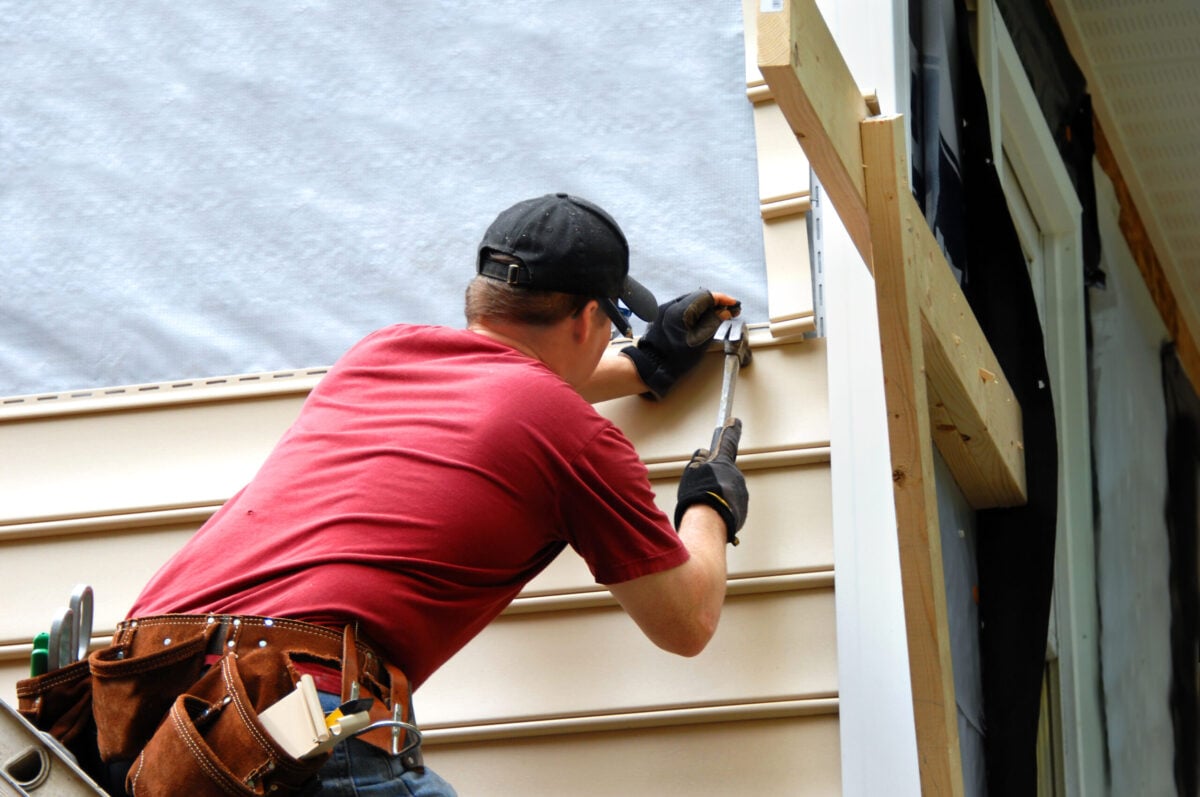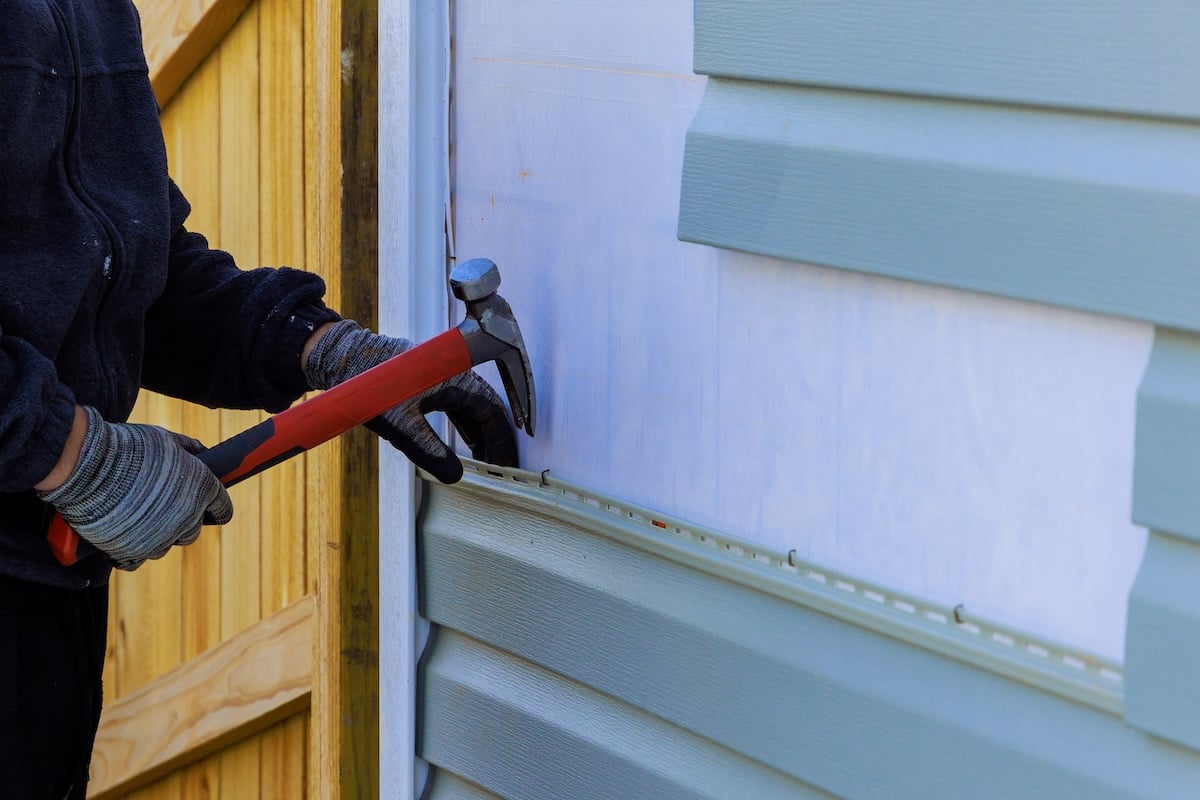Damaged siding doesn’t always mean you need to replace your entire home’s exterior. Many homeowners wonder, “can you replace just a few pieces of siding” instead of tackling a full-scale renovation project. The good news is that partial siding replacement is often possible and can save you both time and money.
Whether you’re dealing with storm damage, wear and tear, or simply want to update your home’s appearance, understanding when and how to replace individual siding pieces is crucial. This guide will walk you through the key factors that determine whether you can replace just a few pieces of siding, the process involved, and when it makes sense to consider a larger replacement project.
Here’s what we’ll cover:
- Factors that determine partial siding replacement feasibility
- Step-by-step replacement process
- The replacement process
🤔 Understanding Siding Replacement Basics

Before diving into whether you can replace just a few pieces of siding, it’s important to understand how siding systems work. Most residential siding is designed with interlocking or overlapping pieces that create a weather-resistant barrier around your home.
The ability to replace individual pieces depends largely on the type of siding material, the installation method, and the age of your current siding. Modern siding systems are typically designed with maintenance and partial replacement in mind, making spot repairs more feasible than older installations.
Professionally installed siding serves multiple purposes beyond aesthetics. It protects your home from weather elements, provides insulation, and contributes to your property’s overall value. When considering partial replacement, you’ll need to ensure that new pieces integrate properly with the existing system to maintain these protective qualities.
Types of Siding and Replacement Considerations
- Vinyl Siding: Easy to replace individual pieces due to its interlocking design, but matching color and texture can be difficult due to UV fading over time.
- Fiber Cement Siding: Durable but requires careful handling; replacement is labor-intensive and often needs professional installation due to its weight and brittleness.
- Wood Siding: Replacement depends on style; matching grain, stain, and weathering can be tricky, with new pieces often needing to weather naturally or be treated for blending.
- Steel and Aluminum Siding: Piece-by-piece replacement is possible, but fading and chalking make color matching challenging. Replacing middle sections often requires removing adjacent pieces, adding complexity.
👉 5 Key Factors That Determine Siding Replacement Feasibility

Understanding the key factors for siding replacement helps ensure your home stays protected and maintains its value. Evaluating these factors also prevents costly repairs down the line.
1. Age and Availability of Materials
The age of your existing siding plays a crucial role in determining replacement feasibility. Newer siding systems typically have readily available replacement materials, while older installations may present challenges.
Manufacturers discontinue siding styles, colors, and profiles over time. If your siding is more than 10-15 years old, finding exact matches may be difficult or impossible. Some manufacturers maintain limited stock of older profiles, but availability isn’t guaranteed.
When exact matches aren’t available, you may need to consider replacing entire sections or sides of your home to maintain a uniform appearance. This factor often tips the scales toward partial replacement of larger areas rather than individual pieces.
2. Extent of Damage
The scope and pattern of damage significantly influence whether partial replacement makes sense. Isolated damage to a few pieces is ideal for spot replacement, while widespread damage may warrant full replacement.
Consider the location of damaged pieces as well. Damage concentrated on one side of your home may allow for sectional replacement, while scattered damage across multiple sides could make partial replacement less cost-effective.
Weather-related damage often affects large areas simultaneously. Hail damage, for example, may appear minor initially but can compromise the integrity of numerous pieces that will fail over time.
3. Color and Texture Matching
Achieving seamless color and texture matching is one of the biggest challenges in partial siding replacement. Even when using the same manufacturer and product line, variations in production batches can create noticeable differences.
UV exposure causes significant fading in most siding materials. South-facing surfaces typically show the most dramatic color changes, while protected areas may retain their original appearance. This natural weathering process makes matching extremely difficult. Choosing a brand with a strong reputation for color consistency, such as James Hardie, can significantly reduce this issue. You can explore a wide range of fade-resistant options in our post about Hardie board siding colors.
Some contractors recommend replacing entire visible sections rather than individual pieces to maintain aesthetic consistency. This approach may cost more initially but provides better long-term visual appeal.
4. Installation Method and Access
The original installation method affects how easily individual pieces can be replaced. Some siding installations use overlapping techniques that make accessing middle pieces difficult without disturbing surrounding areas.
Accessibility to damaged pieces is another crucial consideration. Siding on upper levels, around architectural features, or in tight spaces may require special equipment or techniques, increasing replacement costs.
Professional contractors can often work around access challenges, but homeowners attempting DIY replacement may find certain locations impractical or unsafe to reach.
5. Underlying Structure Condition
Before replacing siding pieces, it’s essential to assess the condition of underlying structures. Damaged siding may indicate moisture problems, insulation issues, or structural concerns that need addressing.
Water damage behind siding can compromise sheathing, insulation, and framing. Simply replacing visible siding pieces without addressing underlying problems will likely lead to recurring issues.
A professional inspection can identify hidden problems that might not be apparent during a surface-level assessment. This evaluation helps determine whether partial replacement is sufficient or if more extensive work is needed.
🛠️ The Replacement Process

Measuring and Preparing for Replacement
The replacement process begins with accurately measuring the damaged siding pieces. This step ensures you obtain materials that match the existing siding in both design and color. Take precise measurements of the length, width, and overlap of the damaged pieces to ensure a seamless fit. It’s also important to inspect the surrounding area for any additional wear or damage that may need attention. Once measurements are complete, source matching materials from a reliable supplier to ensure a consistent and durable siding.
Understanding Fastening Patterns and Specifications
Most siding systems are designed with specific fastening patterns and overlap measurements, which are critical for proper weather resistance and structural integrity. These specifications must be closely followed during replacement to maintain the siding’s functionality. Overlooking these details can lead to gaps or misalignment, compromising the system’s ability to protect your home from the elements. Familiarize yourself with the manufacturer’s guidelines or consult a professional to ensure these requirements are met.
Removing Damaged Siding Pieces
The removal process varies depending on the type of siding material, such as vinyl, wood, or fiber cement. Generally, it involves carefully disconnecting interlocking mechanisms and removing fasteners without damaging adjacent siding pieces. This step often requires specialized tools, such as a siding removal tool or pry bar, to safely separate the pieces. Extra care is needed to avoid cracking or bending nearby panels, which could increase the scope of repairs.
Installing the New Siding Pieces
Once the damaged pieces are removed, the new siding pieces need to be installed carefully. Align the new pieces with the existing siding, ensuring proper overlap and a snug fit. Fasten the pieces securely according to the original fastening pattern, avoiding over-tightening, which could lead to warping or buckling. Take your time to ensure the new siding aligns seamlessly with the rest of the system for an even, professional appearance.
Final Steps: Caulking and Weatherproofing
To complete the installation, apply caulking to seal any gaps between the new siding and surrounding pieces. This step is essential for preventing water infiltration and maintaining the siding’s weatherproofing. Inspect the entire area for any loose edges, gaps, or imperfections, and make adjustments as needed. Finally, clean the surface to remove debris and ensure the siding looks as good as new. By following these steps, you’ll restore your siding’s protective qualities and maintain the aesthetic of your home.
👨🔧 Trust Maumee River Roofing for Your Siding Needs
At Maumee River Roofing, we understand that every siding project is unique, whether you need to replace just a few pieces or consider a full replacement. With years of experience, a commitment to quality, and a focus on honest recommendations, our team is here to guide you every step of the way. We work with all major siding types and ensure seamless material matching and professional installation to protect and enhance your home.
If you’re dealing with damaged siding, trust the experts at Maumee River Roofing to deliver reliable, high-quality solutions tailored to your needs. Contact us today for a free consultation and estimate—let’s get your home looking and performing its best!
